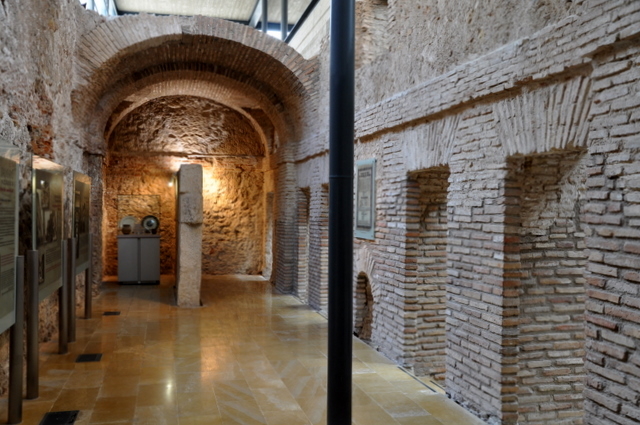- Region
- Águilas
- Alhama de Murcia
- Jumilla
- Lorca
- Los Alcázares
- Mazarrón
- San Javier
-
ALL AREAS & TOWNS
- AREAS
- SOUTH WEST
- MAR MENOR
- MURCIA CITY & CENTRAL
- NORTH & NORTH WEST
- TOWNS
- Abanilla
- Abarán
- Aguilas
- Alamillo
- Alcantarilla
- Aledo
- Alhama de Murcia
- Archena
- Balsicas
- Blanca
- Bolnuevo
- Bullas
- Cañadas del Romero
- Cabo de Palos
- Calasparra
- Camping Bolnuevo
- Campo De Ricote
- Camposol
- Canada De La Lena
- Caravaca de la Cruz
- Cartagena
- Cehegin
- Ceuti
- Cieza
- Condado de Alhama
- Corvera
- Costa Cálida
- Cuevas De Almanzora
- Cuevas de Reyllo
- El Carmoli
- El Mojon
- El Molino (Puerto Lumbreras)
- El Pareton / Cantareros
- El Raso
- El Valle Golf Resort
- Fortuna
- Fuente Alamo
- Hacienda del Alamo Golf Resort
- Hacienda Riquelme Golf Resort
- Isla Plana
- Islas Menores & Mar de Cristal
- Jumilla
- La Azohia
- La Charca
- La Manga Club
- La Manga del Mar Menor
- La Pinilla
- La Puebla
- La Torre
- La Torre Golf Resort
- La Unión
- Las Palas
- Las Ramblas
- Las Ramblas Golf
- Las Torres de Cotillas
- Leiva
- Librilla
- Lo Pagan
- Lo Santiago
- Lorca
- Lorquí
- Los Alcázares
- Los Balcones
- Los Belones
- Los Canovas
- Los Nietos
- Los Perez (Tallante)
- Los Urrutias
- Los Ventorrillos
- Mar De Cristal
- Mar Menor
- Mar Menor Golf Resort
- Mazarrón
- Mazarrón Country Club
- Molina de Segura
- Moratalla
- Mula
- Murcia City
- Murcia Property
- Pareton
- Peraleja Golf Resort
- Perin
- Pilar de la Horadada
- Pinar de Campoverde
- Pinoso
- Playa Honda
- Playa Honda / Playa Paraíso
- Pliego
- Portmán
- Pozo Estrecho
- Puerto de Mazarrón
- Puerto Lumbreras
- Puntas De Calnegre
- Region of Murcia
- Ricote
- Roda Golf Resort
- Roldan
- Roldan and Lo Ferro
- San Javier
- San Pedro del Pinatar
- Santiago de la Ribera
- Sierra Espuña
- Sucina
- Tallante
- Terrazas de la Torre Golf Resort
- Torre Pacheco
- Totana
- What's On Weekly Bulletin
- Yecla


- EDITIONS:
 Spanish News Today
Spanish News Today
 Alicante Today
Alicante Today
 Andalucia Today
Andalucia Today
The Los Baños archaeological museum in Alhama de Murcia
"Los Baños" Archaeological Museum
The "Los Baños" archaeological museum of Alhama de Murcia, which is next to the church of San Lázaro at the foot of the hill on which the castle stands, was created in order to preserve and protect the remains of the Moorish and Roman baths, which are over 2,000 years old.
It's an interesting place to visit and not only houses a static exhibition relating to the spa history of Alhama de Murcia, but is also used as a cultural venue, housing temporary exhibitions.
Click here to read the full history of Alhama de Murcia.
Inside the centre the different recreational and medicinal areas are on display to the public, and audiovisual aids are used to inform visitors about each area and each period of the spa's history.
Four different water sources are known to have originated in Alhama, two of them inside the bathing complex itself, the third outside but close by, and a fourth around 12 kilometres from the town. This last spring was cold, clean water, used for drinking, but the other three were hot, emerging from the ground at 36 degrees centigrade.

The first spas were built here in the first century AD by the Romans, and were used until around the beginning of the 4th century. There is evidence of two distinct areas within the Roman remains: one dedicated to therapeutic and medicinal functions and the other for leisure, or social bathing, with distinct 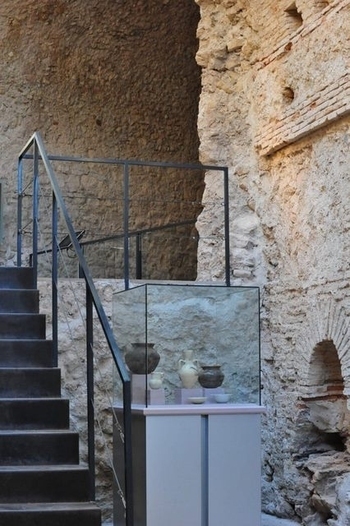 areas for men and women.
areas for men and women.
The medicinal area consisted of two rooms with a communal swimming pool and "lucernario cenitales", that is to say, a series of holes in the roof through which the vapours could escape. The second space contained all the various bathing stages which were habitual in the Roman world with the exception of the aposyterium, or dressing room: the cold room (or frigidarium), the warm room (tepidarium) and the hot room (caldarium).
This last space was heated via an oven which circulated the hot air below the floors and through specially created cavities within the walls. The bather would complete the circuit twice, beginning in the cool room, and then working back down through the three baths to the cold bath at the end of the session.
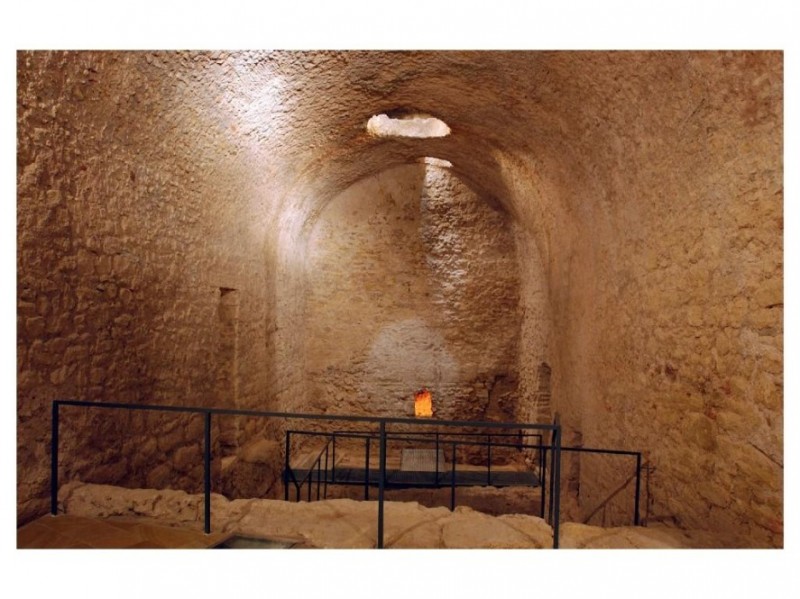
Following the decline of the Romans during the 4th century AD the baths fell into disrepair, but were then re-used by the Arabs when they took control of the area during the 8th century. Daily bathing was a ritual in the Arab culture, and these medicinal hot springs were a magnet for the new occupiers of the land. The Roman baths in Alhama were not the only ones re-used by the Arabs during their centuries of occupation, as archaeological evidence shows that those in both Archena and Fortuna were also re-used during this period.
The Moors made use of the original Roman vaulted baths by cutting new light holes into the roof and extended the facilities, creating two extra rooms around the sources of hot water (one each for men and women, although women were only permitted to bathe once a week on Thursdays!).
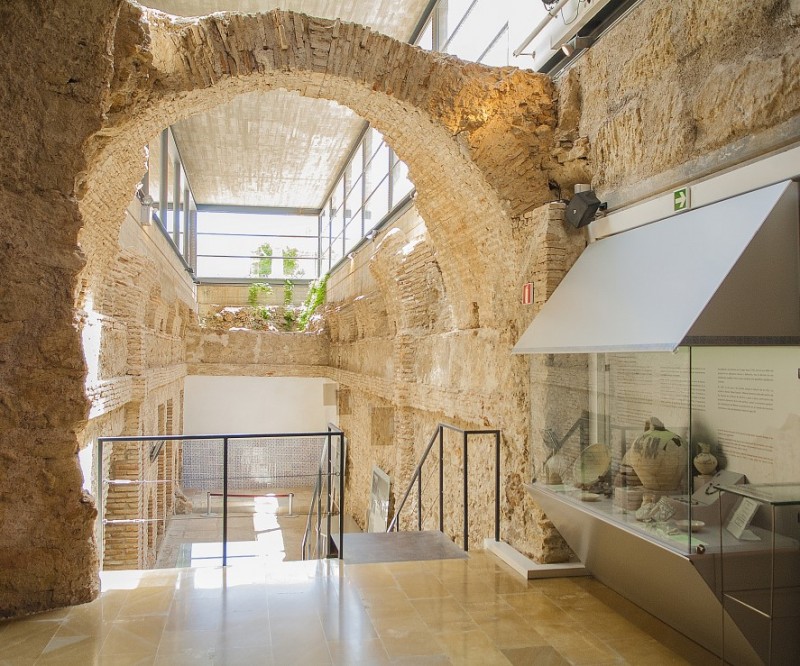 It was during this period that the town of Alhama was given its name: "Al-hâmman" means the town of the hot bath.
It was during this period that the town of Alhama was given its name: "Al-hâmman" means the town of the hot bath.
Among the many sources citing the existence of the baths during the Arab occupation the most important is that of Al-Idrisi, who spoke of the town in his description of the journey from Almería to Murcia. He makes reference to "Hisn al-Hamma", the castle of the thermal baths, making it clear that there was already a fortress above the baths and the thermal water springs.
There is also evidence of a reasonable level of population in the Moorish period as the settlement grew around the baths, but once the Christians re-occupied the area in the 13th century the bath complex fell into disuse. This may have been partly because bathing too much in this era was viewed as an indication of religious leanings towards the words of Mohammed - in the medieval world over-cleanliness was viewed as being not good for the health - but is more likely due to the fact that Alhama was close to the new frontier between Christendom and the Moorish kingdom of Granada. This made it dangerous territory, subject to constant raids and the threat of violence, and the area was severely de-populated by all but the military as a result (see an account of the history of Alhama for more detail).
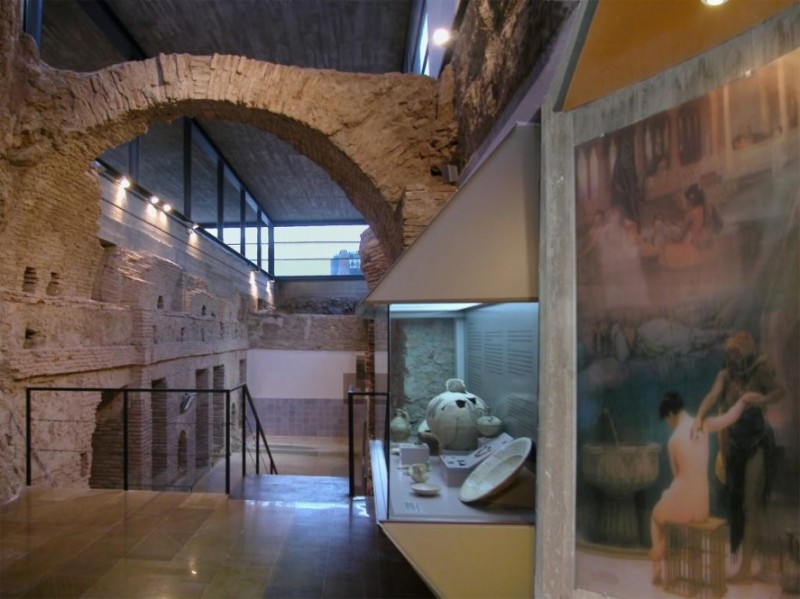
Nonetheless, it seens that by the mid-16th century the baths were once more in use: even before then Hieronoymus Münzer mentioned the existence of "a thermal spring with clear water", and another German traveller in 1557 reported that Alhama had waters which cured colic, amongst other illnesses (although he added that the baths were in some need of repairs).
In 1627, the Franciscans established a hospice next to the church of the Virgen de la Concepción so that the sick could reside there and take advantage of the warm waters, and the waters continued to be 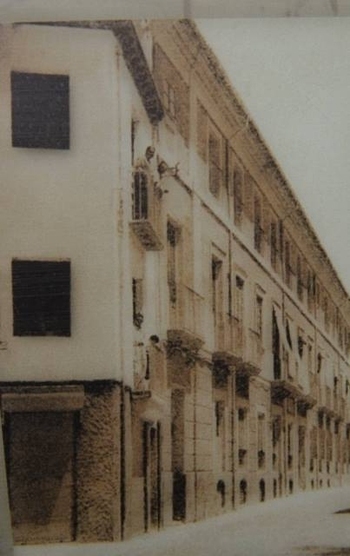 used in one way or another for the next 200 years. But in 1848 the hospice was demolished to allow the construction of a luxurious new hotel, the "Gran Hotel Balneario".
used in one way or another for the next 200 years. But in 1848 the hospice was demolished to allow the construction of a luxurious new hotel, the "Gran Hotel Balneario".
This was the start of the age of splendour of the thermal baths of Alhama, with the addition of new bathing areas in the basement floor and the construction of a grand hotel above, with modern facilities and social function rooms which became home to a busy social programme and were patronised by the wealthy middle classes from all over Spain. At the same time, a public bath was created to allow even the poorest of the locals to bathe.
The Balneario continued to enjoy an era of splendour until the outbreak of Civil War in 1936, but during the conflict, while the hotel was in use as a hospital, the spring waters dried up. The building was demolished in 1972, the rubble covering 2,000 years of bathing history, before the arcaheological museum once again brought the site to life.
Visiting the Museo Arqueológico Los Baños
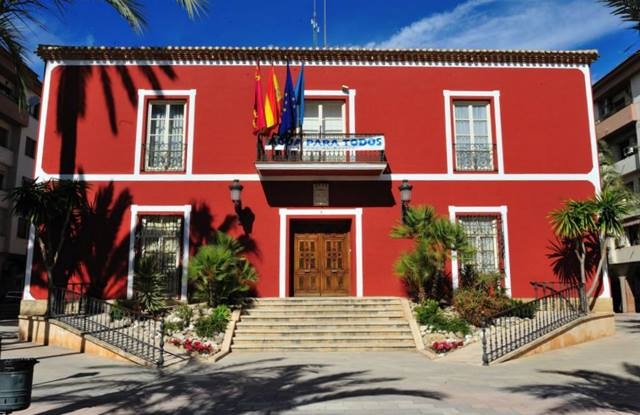
The museum is located at Calle Sánchez Vidal nº 5 and enquiries can be made by telephone on 968 630776 or my email at museoarqueologico@alhamademurcia.es.
Opening hours vary throughout the year:
15th September to 27th May: Tuesday to Saturday 10.00 to 14.00 and 17.00 to 20.00, Sundays 10.00 to 14.00.
27th May to 30th June: Tuesday to Saturday 10.00 to 14.00 and 18.00 to 21.00, Sundays 10.00 to 14.00.
1st July to 31st August: Tuesday to Saturday 10.00 to 13.30 and Thursdays 18.00 to 20.00.
ADMISSION IS FREE OF CHARGE.
Tickets for cultural events at the Teatro Cine Velasco are also sold from the Archaeological Museum.
Parking
The easiest parking option is either the underground public carpark beneath the Town Hall and the Plaza de la Constitución or the large car-parking area in the Recinto Ferial at the back of the Parque de la Cubana. From both of these locations the museum is an easy 5-minute walk.
Visit the Museum as part of the free, guided audiotour of Alhama de Murcia

Visiting the Museum can also be included as part of the free guided audio tour offered in English by the tourist office during normal opening hours. The tour takes about an hour and a half and is available free on a daily basis, enabling visitors to discover the interesting historical locations around the town and discover the hidden historical gems in the backstreets.
Click for free guided audiotour of Alhama de Murcia.
For more local information about Alhama de Murcia in English, including news and forthcoming events, visit the home page of Alhama Today.
Cartagena
El Carmoli
Islas Menores and Mar de Cristal
La Manga Club
La Manga del Mar Menor
La Puebla
La Torre Golf Resort
La Union
Los Alcazares
Los Belones
Los Nietos
Los Urrutias
Mar Menor Golf Resort
Pilar de la Horadada
Playa Honda / Playa Paraiso
Portman
Roldan and Lo Ferro
San Javier
San Pedro del Pinatar
Santa Rosalia Lake and Life resort
Terrazas de la Torre Golf Resort
Torre Pacheco
Aledo
Alhama de Murcia
Bolnuevo
Camposol
Condado de Alhama
Fuente Alamo
Hacienda del Alamo Golf Resort
Lorca
Mazarron
Puerto de Mazarron
Puerto Lumbreras
Sierra Espuna
Totana
Abaran
Alcantarilla
Archena
Blanca
Corvera
El Valle Golf Resort
Hacienda Riquelme Golf Resort
Lorqui
Molina de Segura
Mosa Trajectum
Murcia City
Peraleja Golf Resort
Ricote
Sucina
Condado de Alhama
El Valle Golf Resort
Hacienda del Alamo Golf Resort
Hacienda Riquelme Golf Resort
Islas Menores and Mar de Cristal
La Manga Club
La Torre Golf Resort
Mar Menor Golf Resort
Mazarron Country Club
Mosa Trajectum
Peraleja Golf Resort
Santa Rosalia Lake and Life resort
Terrazas de la Torre Golf Resort
La Zenia
Lomas de Cabo Roig

CAMPOSOL TODAY Whats OnCartagena SpainCoronavirusCorvera Airport MurciaMurcia Gota Fria 2019Murcia property news generic threadWeekly Bulletin






